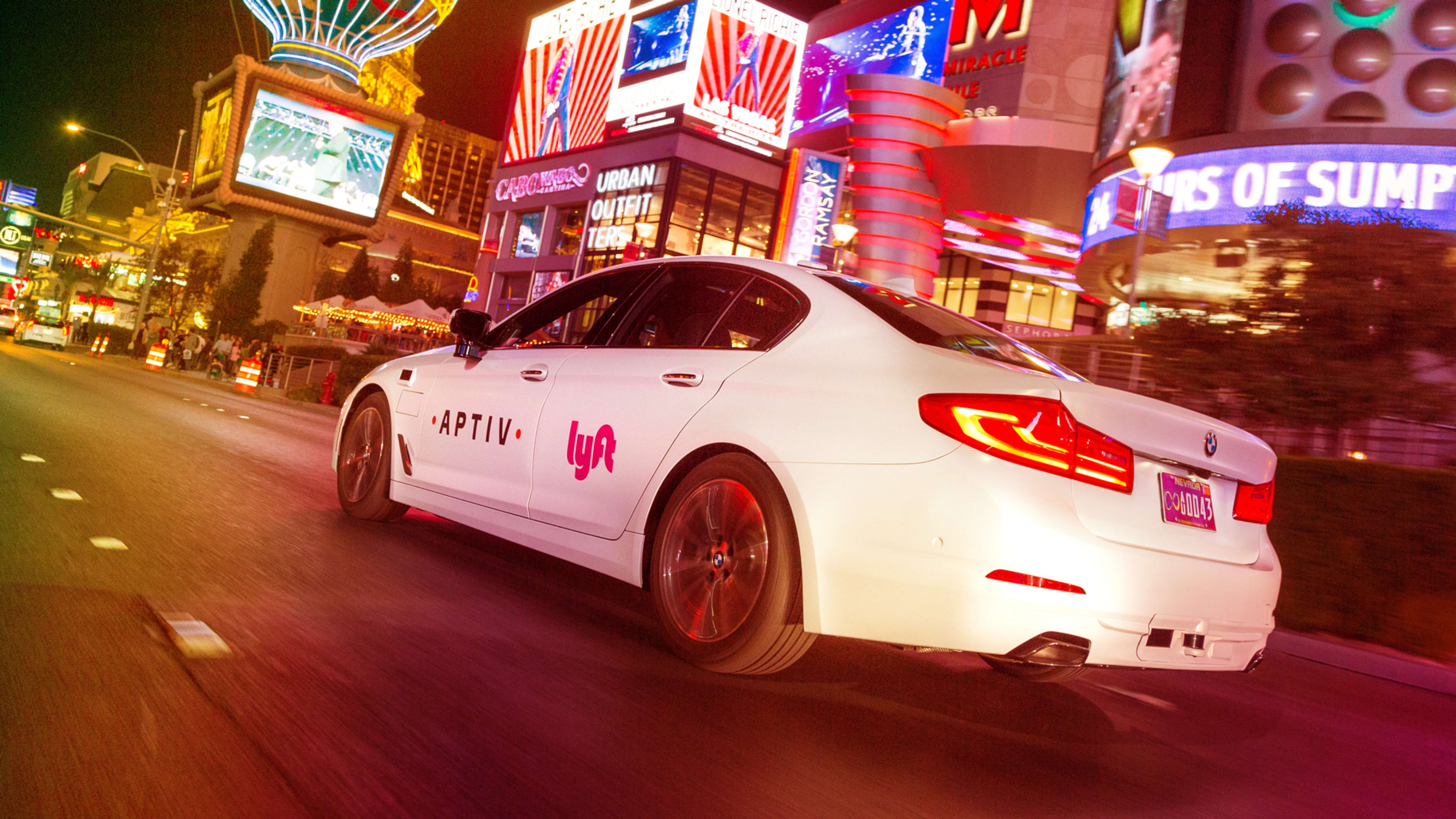Since launching a self-driving ride pilot in January, Lyft and Aptiv, which builds self-driving hardware and software, have given 5,000 rides to customers in Las Vegas.
Lyft is one of only two companies putting regular people in contact with self-driving cars. The other is Waymo, which has a public pilot in Arizona and plans to roll out a taxi service. The 5,000-ride mark represents a big milestone for Lyft in particular, which wants to prove itself as a serious player in the self-driving car space.
Overall consumer feedback has been positive, says Jody Kelman, product lead on Lyft’s self-driving platform, noting that 20% of riders opted to take more than one trip with a self-driving car.
Lyft and Aptiv first launched their pilot during the Consumer Electronics Show in Las Vegas in January. That week, the two companies gave roughly 400 rides. In May, Aptiv and Lyft debuted a full public program in Las Vegas, open to all. So far, the two companies have deployed 20 vehicles, with plans to expand to 30 in the next few weeks.
The pilot has given both companies insight into the complexity of taking the driver out of the car. “The driver performs all sorts of informal services in a vehicle now, everything from being a safety buffer to authenticating a rider. So all of those things have to be thought through in the digital and technology realm,” says Gretchen Effgen, VP of global partnerships at Aptiv.
In short, creating a self-driving car isn’t just about getting the car to drive. It involves car maintenance, noticing when a customer leaves something in the car, and answering questions for a confused rider, she says. That will require Aptiv to load up on more sensors inside the car to do things like notice trash or know when to send a car to get cleaned.
But Aptiv and Lyft will also have to think about how they will build out car servicing—how these cars will get cleaned between rides. Other companies are doing this through partnerships. Waymo has struck up a deal with Avis to manage its self-driving fleets. Apple has teamed up with Hertz for when its cars eventually hit roads. General Motors has a network of cars through its Maven brand and has also considered using its web of car dealers to tune up its fleets.
For the moment, Lyft is more focused on what’s going on inside the car cab. Kelman say she is thinking more about how to rejigger the human component of a cab ride with no driver. “What we imagine is—once you’re pulling that driver out—there’s always a human, whether it’s a phone or a video interaction, helping guide you through any parts of the experience that are tough for you,” says Kelman.
What that would mean for Lyft is twofold. The company is tinkering with a consumer interface inside its app to help inform riders. It also has a console inside the car that answer some basic consumer questions. But Kelman sees the need for something bigger. She talked about creating a call center to put riders in touch with a human who could tackle more nuanced issues at any point during a ride.
“We do imagine these humans will stick around, because we really do like seeing the face or hearing that voice in front of us,” says Kelman, “But it doesn’t need to be a constant part of your ride.”
Recognize your brand’s excellence by applying to this year’s Brands That Matter Awards before the early-rate deadline, May 3.
